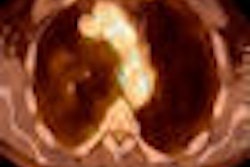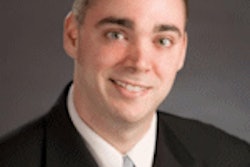This year's RSNA annual meeting will showcase a multitude of novel studies in molecular imaging and nuclear medicine from across the globe. Scientific papers promise to deliver relevant information that can help radiologists and nuclear medicine physicians today, while providing a look into clinical applications of the future.
Dr. Milton Guiberteau, chairman of the RSNA nuclear medicine subcommittee, has noticed an increased number of submissions from residents and fellows in training programs in both radiology and physics.
"RSNA is very interested in research by up-and-coming trainees and contributors to radiology," said Guiberteau, who is division chief of nuclear medicine at St. Joseph Medical Center in Houston. "We have been encouraged on all fronts, as researchers are willing to invest the time in the participation of radiologists-in-training and physicists-in-training."
FDG-PET/CT studies remain popular and are expanding their reach. "In the past, there has been a push to diagnose and detect cancer at an early stage," he said. "We have moved far beyond that in our goals, not just to diagnose the lesions, but to determine how aggressive these tumors may be and their propensity for metastasizing prior to therapy."
Dr. Umar Mahmood, chair of the subcommittee on molecular imaging, described this year's contributions as "outstanding" and a "good mix of PET, SPECT, and MR. We have a nice mix of clinical and preclinical. These are the agents and processes that will be increasingly important for radiologists as we go forward."

Breast imaging is also making its way into nuclear medicine research, with one scientific session (Monday November 30, 8:30 a.m.-12:00 p.m., VM21, Arie Crown Theater) containing a number of presentations on cutting-edge technologies like breast-specific gamma imaging (BSGI). Guiberteau cited BSGI's contribution to the detection of high-risk lesions in patients with indeterminate mammographic findings. "It is very encouraging that dedicated nuclear medicine breast imaging by using sestamibi and a dedicated high-resolution gamma camera can aid in problem-solving in many of these patients," he added.
In other notable presentations, the American College of Surgeons Oncology Group on Friday, December 4, will present initial results of its study on PET/CT's efficacy in non-small cell carcinoma. "It points out that FDG-PET/CT is not only important for diagnosis and following patients, but it also can assess for the success of various therapies, including radioablation of lung tumors," Guiberteau said.
Below are highlights of several novel scientific papers scheduled for presentation at this year's RSNA annual meeting in the areas of molecular imaging and nuclear medicine.



















